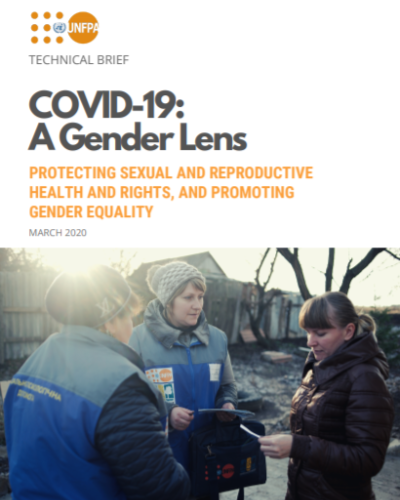COVID-19: A Gender Lens

Emergency response of COVID-19 outbreak also means that resources for sexual and reproductive health services may be diverted to deal with the outbreak, contributing to a rise in maternal and newborn mortality, increased unmet need for contraception, and increased number of unsafe abortions and sexually transmitted infections.
Around the world, women make up seventy percent of health and social service workers. Midwives, nurses and community health workers are on the front lines of efforts to combat and contain outbreaks of disease and require personal protective equipment (PPE). Safe pregnancy and childbirth depend on sufficient numbers of skilled healthcare personnel, midwives in particular, and adequate facilities for providing essential and emergency quality care 24/7. Respiratory illnesses in pregnant women, particularly COVID-19 infections, must be treated with utmost priority due to increased risk of adverse outcomes. Infection control measures must include proper segregation of suspected, possible and confirmed cases from antenatal care, neonatal and maternal health units. Surveillance and response systems for women of reproductive age and pregnant women should be in place, including in antenatal clinics. There is currently no evidence to support vertical mother-to-child transmission of COVID-19.
Provision of family planning and other sexual and reproductive health services and commodities, including those related to menstrual health, are central to women and girls’ health, empowerment, and dignity, and may be impacted as supply chains undergo strains from COVID-19 pandemic response.

